Several times during the last several weeks I’ve posted information about trails in Big Bend National Park (Emory Peak, Big Balancing Rock, The Den, and the Oak Springs Trail). Today, I’d like to tell you about one of the great features of Big Bend—and you can drive to it! The park offers more than 50 backcountry campsites that are accessible by vehicles. Some of these you could fairly easily access with an RV, others you might want a jeep or ATV (no normal car could get to some of these campsites!). The campsites are distributed throughout the park, and range from a gravel parking area on the side of the paved park road to remote tracks leading to peaceful camping spots on the edge of the Rio Grande River. What site you get depends on what sites are available (during Christmas week and spring break, most if not all of the campsites are taken), and what suites your style of camping best. Remember: these sites don’t have your normal campground amenities (restrooms, water, picnic tables, campfire rings, etc). Therefore, you should only consider these campsites if you want a truly rustic experience! (This is part 1. Part 2 is here. Part 3 is here.)
To camp in these backcountry campsites (“primitive roadside campsites”, as defined by the park service), you will need to get a permit at the visitor center’s backcountry office. Permits are $10 (5/10), and can include up to 14 nights per permit. Campsites cannot be reserved; however, you can get your permit 24 hours in advance if you wish. All permits must be gotten in person, and cannot be gotten over the telephone. The process can be sped up if you fill out the Backcountry Planning Worksheet (http://www.nps.gov/bibe/planyourvisit/upload/BC_worksheet.pdf) before you go to get your permit. While getting the permit, you will decide what campsites you want which nights, and the ranger will enter this into their records so that they won’t have two people in the same campsite on the same night. Also, if you don’t turn in your permit at the end of your stay, they can go looking for you in the area that you were camping in. They may or may not do this, so don’t believe that if you don’t show up on time they’ll miraculously come rescue you: this is not a safeguard against common sense! Each night that is on your permit, you can sleep in the site written on the permit. We’ve never been “checked on”, but it would be a good thing to have your permit handy if a park ranger should come along.
Next, I’ll tell you about some of the campsites we’ve stayed in. There are many more that we’ve never experienced, but I’d assume that they are similar to the ones we’ve camped in. Because there are so many roadside primitive campsites in Big Bend, I will split this into 2 posts, one about the campsites along main park roads, and the other about the campsites along “primitive dirt roads”.
Along Main Park Roads
Nine Point Draw
This campsite (NP-1) is located 5 miles south of the Persimmon Gap Visitor Center, between mile markers 22 and 23. I have never camped here, but if you’re planning on doing The Den the next day, this would be a great campsite to get.
Hanold Draw
This campsite (HD-1) is located almost on the edge of the road 4.9 miles north of the Panther Junction Visitor Center. It is easy to access, and almost in the middle of the park, so it has a very central location. It is also usually open (no one’s reserved it), so it’s a great choice if you want an easy campsite. To get to the campsite, you will need to drive down a steep gravel road to a huge gravel parking area. This is easily done by a low-clearance vehicle, and you could probably even do it with an RV (within reason). Even though you are on the very edge of the main park road, the gravel embankment above the parking area blocks out the noise of traffic, and it is amazingly peaceful. Road servicing equipment is sometimes parked in the parking area, and there is a corral for horses as well (pack out all hey, etc.). This would be a great place to set up a tent, and it is out of the wind, which makes it warmer than other campsites in the area (good when it’s snowing (it always snows when we go to Big Bend, and they always say, ‘This never happens’), but the lack of wind would be uncomfortable in warmer months).
K-Bar
There are two K-Bar campsites, KB-1 and KB-2. Both are at the end of a dirt/gravel road, about 2 miles east of the Panther Junction Visitor Center. KB-1 is about 1 mile from the paved road, and KB-2 is at the very end of the dirt road. I have not used these campsites.
Government Spring/Grapevine Hills Road
The Government Spring site is easily accessible; an RV could probably do it, and it would not be at all difficult for a low-clearance vehicle. The site is located 3.3 miles west of the Panther Junction Visitor Center, 100 yards up the Grapevine Hills Road. It is also known as GH-1, as there are 5 campsites on this road. GH-2 and GH-3 are located about 4 miles down the road. These could probably be accessed by a high-clearance vehicle, and perhaps by a low-clearance vehicle, depending on weather conditions. The road is typically fairly well-maintained up to the parking area for the Big Balancing Rock (7 miles up the road). GH-4 and GH-5 are beyond this point, and often require high clearance to access. We stayed in GH-4, and found the road to be pretty bad…and we were used to pretty bad roads!
Paint Gap
I don’t recall ever using the Paint Gap campsites, even though they are located only 6 miles west of the Panther Junction Visitor Center. The sites are up the Paint Gap Road, and the first three are accessible by low-clearance vehicles. PG-1 is 1 mile from the paved road, while PG-2 and PG-3 are about 2 miles from the paved road. At this point, the road begins to go through the “gap”, so you will need high clearance to get to PG-4, located about 2.5 miles up the road.
Croton Spring
The Croton Spring Road is only a mile long, but there are two campsites along it which share a common parking area. The dirt road is 9 miles west of the Panther Junction Visitor Center. Both CS-1 and CS-2 are located at the end of the Croton Spring Road.
Fees: $20 per vehicle to enter Big Bend National Park, valid 7 days. Big Bend Annual, Interagency, Golden Age (Senior), and Golden Access (Access) Passes are also accepted. There is also a $10 fee per primitive camping permit.
Road 
Signs 
























































Scenery 










































































Overall Rating: 




















































Go to Big Bend Backcountry Car Camping Part 2.
Got to Big Bend Backcountry Car Camping Part 3.
This Week’s Featured Product!
This guide is set up so you can get the best of the best of Big Bend! With tons of information and adventures tailored to your fitness level, interest, time constraints, and more, it’s a great resource.
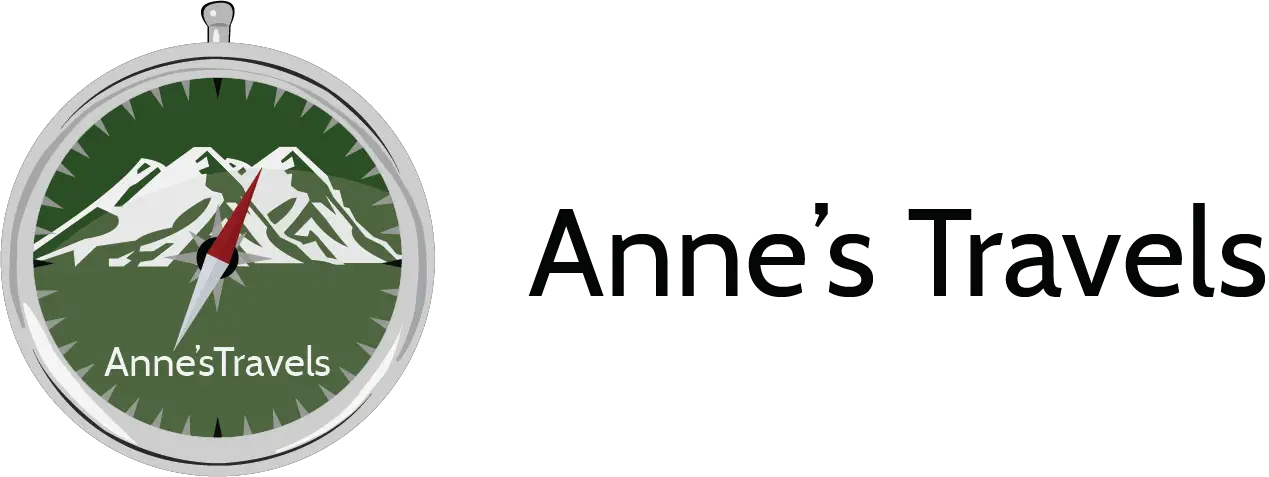

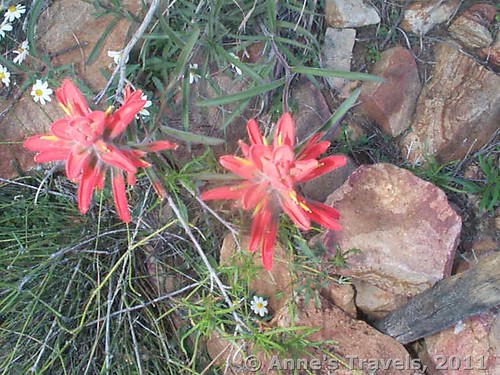
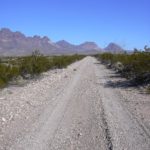
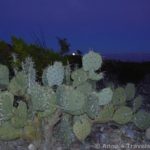
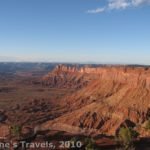
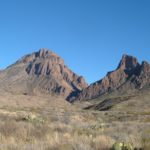
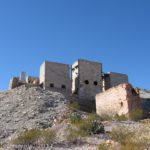
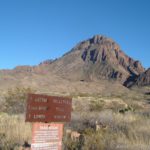
Thank you, I have just been looking for info about this subject for a while and yours is the best I have found out so far.
Pingback: The Best Hikes in Big Bend National Park
Does anyone know whether Terlingua Abaja is accessible by low clearance at this time?
Hi Deanna,
According to the NPS website, as of today (9/1/13), the Old Maverick Road is open to “high clearance vehicles” but drivers should be prepared for “muddy conditions on all dirt roads” (see http://www.nps.gov/bibe/upload/daily090113.pdf; daily updates are posted at http://www.nps.gov/bibe/daily_report.htm). I’d call the park service for specific updates on Terlingua Abaja (I think the phone number is (432) 477-2251).
Hope that helps!
Anne
Pingback: Anne's Travels » Backcountry Car Camping in Big Bend pt 3
Are there alternative camping sites nearby if i cant get a backcountry permit?
Im planning to arrive 3-16-16, but i was unable to get a reserved campsite. I will be traveling from Houston Tx with my son, and its a long way to drive with no place to stay. Are there ways to get around things? I will ahve a 2 person tent, but i plan on sleeping in my suv. Can i find somewher in the park to sleep with just a day pass? What are my alternatives? Its really stressing me out, but im going no matter what? Please help..
Thanks,
Ben
Hi Ben,
It’s a stressful thing to not be able to reserve a campsite. Chances are very good that you will be able to get a campsite within the park (a very limited number are available to reserve, so most are first-come, first serve), especially if you make that your first order of business after you arrive. Considering you’ll be arriving on a Wednesday, you should be able to get ahead of the crowds of weekend campers, so you’ll have an even better chance at campsites. I’d stop at the Panther Junction Visitor Center first and reserve backcountry campsites for your entire stay. If all the backcountry campsites are full (highly unlikely, especially since you have an SUV and can therefore drive the rougher dirt roads to some of the less-popular campsites) the park staff will be able to point you in the direction of sleeping options.
Hope that helps!
Anne
We are planning this location in July 1st week for a tent camping. I have my wife and 6 year old daughter. Do you think it’s not recommended based on the weather?
Any advice would help.
Pingback: Top 10 Pages on Anne’s Travels in 2014 - Anne's Travels